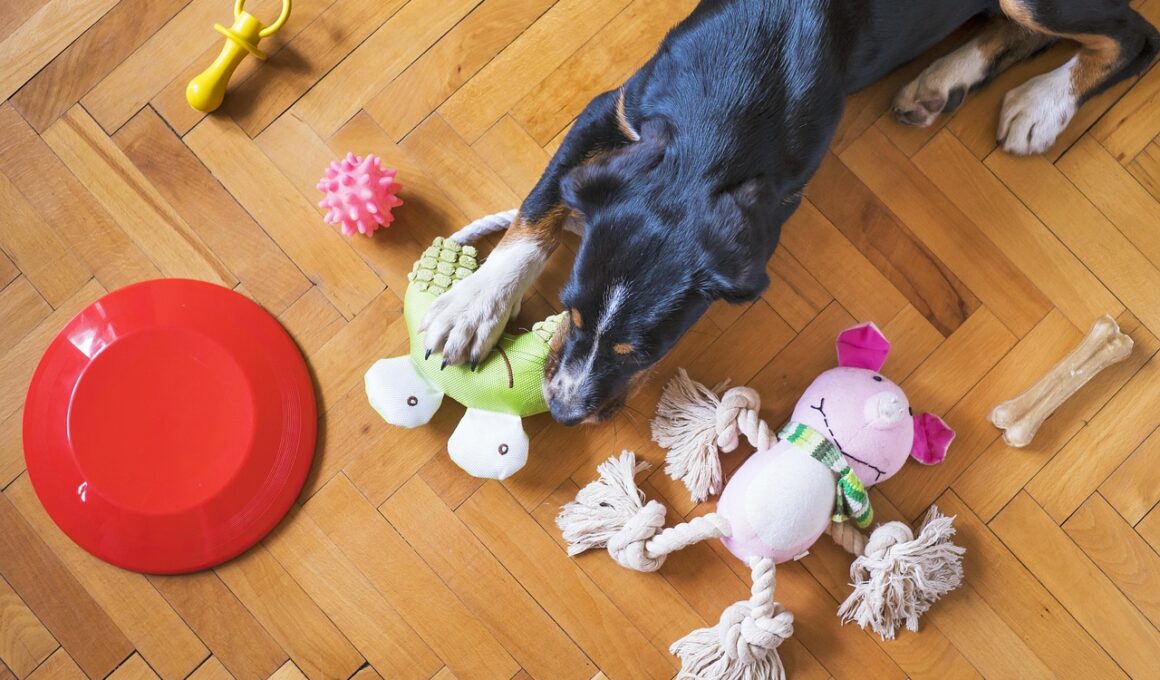Teething Toys with Hidden Treats: Pros and Cons
Teething toys designed for puppies typically serve two essential purposes, providing comfort while also keeping your puppy entertained. Hidden treats within these toys can significantly enhance your pup’s interest, stimulating their natural curiosity and playfulness. This added element not only distracts them but can also serve as a form of reward, prompting desirable chewing behavior that soothes their gums during the challenging teething phase. However, there are some aspects to note. First, the hidden compartments need to be designed with safety in mind; toys should be durable enough to withstand aggressive chewing. Additionally, pet owners must be cautious about the types of treats used, as certain ingredients may not be suitable for all puppies. Beyond safety, you should also consider the level of difficulty in accessing treats. If your puppy finds the toy too challenging, they could lose interest quickly. Therefore, choosing a toy that offers a balance of challenge and reward is crucial. Overall, these teething toys can play a vital role in your puppy’s development and well-being if selected carefully, bearing in mind the pros and cons they present.
Benefits of Hidden Treats
Providing hidden treats within teething toys offers numerous benefits for both you and your puppy. First and foremost, these toys can divert your puppy’s attention away from destructive behavior. By focusing on the enjoyable challenge of getting to the treat, your pup will be less inclined to chew on household items like furniture or shoes. Another significant advantage is that these toys can offer mental stimulation, catering to your puppy’s natural instincts and intellect. Engaging their mind in addition to relieving teething discomfort caters to their well-rounded development. Furthermore, these toys can foster bonding opportunities, especially when you participate by hiding different treats for your pup. This interaction cultivates trust and strengthens your relationship. Additionally, incorporating treats can also create a rewarding experience, helping your puppy understand positive reinforcement. For pet owners, investing in these multi-functional toys can save time and energy, providing an engaging and enriching option during playtime. Always remember to monitor your puppy while they enjoy these toys, ensuring their safety and wellbeing and adjusting the treats based on their preference and capabilities to keep them engaged long-term.
There are important considerations when selecting teething toys with hidden treats for puppies. The material of the toy matters a lot; you want a durable composition that holds up to strong chewing without posing a choking hazard. Toys made from rubber or non-toxic plastic generally perform best. Also, pay attention to the size of the toy. It should fit comfortably in your puppy’s mouth while allowing easy access to treats. Too large of a toy may frustrate your pet. Furthermore, the complexity of the hidden treat compartment can also affect your puppy’s experience. If it’s too intricate, they might give up rather than engage. However, if it’s too simple, the novelty could wear off quickly. Always choose toys that are age-appropriate, as younger puppies may need softer materials or smaller sizes to accommodate their developing jaws. Review customer feedback as well; other puppy owners often offer valuable insights regarding the product’s durability and effectiveness. In addition, ensure that the treats used do not trigger allergies and are appropriate for your puppy’s size and breed for a safe and fun experience.
Regularly inspecting teething toys for wear and tear is essential for keeping your puppy safe. Daily play could lead to damage over time, so keeping an eye on the toy’s condition can prevent potential choking hazards or ingesting harmful pieces. If you notice any cracks or excessive wear, it’s time to replace the toy. Furthermore, although hidden treat toys can be exciting, they shouldn’t be the only form of entertainment for your puppy. Variety is vital in keeping their interest piqued. Consider rotating toys in your puppy’s playtime routine to maintain engagement and prevent boredom. Mixing these hidden treat toys with other forms of activities like fetch or tug-of-war challenges can provide a better-rounded play experience. Don’t forget about the importance of supervised play; while these toys can keep puppies occupied, they still need close monitoring. Always observe their behavior during playtime and adjust based on what you see. Finally, remember that while teething toys with hidden treats can be helpful, the bond you form with your puppy through active participation during play is irreplaceable and priceless.
Understand that while teething toys with hidden treats can be fantastic, they may not be suitable for every puppy. Some breeds or individual pups may possess varying levels of interest in puzzles or hidden rewards. Certain puppies might show frustration rather than enjoyment when struggling to access a treat. It’s critical to evaluate your puppy’s personality and preferences before deciding on their ideal toy. Additionally, consider how teething toys will complicate your puppy’s chewing habits. Toys specifically designed for teething should be the primary focus during this vulnerable stage as they provide necessary comfort and relief. However, adding hidden treats to the mix can either enhance or divert from this purpose. Observing your puppy’s reaction to the toy and their chewing behavior will inform whether it should remain a staple in their collection. If you notice your puppy becoming overly fixated on the treat rather than engaging with the toy itself, it may be counterproductive. Striking the right balance between stimulating play and essential teething relief should always remain the priority for your puppy’s wellbeing.
Lastly, remember to focus on the long-term impacts of teething toys with hidden treats on your puppy’s behavior. Effective use of these toys can aid in establishing healthy chewing habits, guiding your puppy toward appropriate toys instead of household items. Moreover, these toys can foster a positive relationship between you and your pet while preventing behavioral issues stemming from boredom or anxiety. Moreover, developing positive chewing experiences early on can lead to more balanced behaviors as your puppy grows. The skills they acquire while playing can become a foundation for further training and behavior reinforcement. Ultimately, the goal of teething toys with hidden treats is to maintain your puppy’s comfort while also engaging their minds. Invest in quality toys, assess your puppy’s preferences, and always encourage positive engagement during play. Moreover, don’t hesitate to explore various treat options, catering to your pet’s distinct preferences and dietary needs. By taking these factors into account, you will promote a healthier, happier, and more playful experience for your beloved furry friend.
Overall, when assessing the practicality of teething toys with hidden treats, it’s crucial to balance the pros and cons. These toys indeed offer stimulating play aspects that can keep your puppy entertained while relieving the challenges of teething. However, owner supervision and proper selection are paramount. Always prioritize safety, ensuring the materials used are appropriate and non-toxic. Additionally, understanding your puppy’s needs and preferences will lead to better results and satisfaction for both you and your pet. As your puppy continues to grow and develop, you’ll discover that their tastes may change, prompting adjustments to their play style and toy selection. Consult with your veterinarian if you have concerns about your puppy’s chewing behavior, as this may signal underlying issues that need addressing. Be sure to choose treats wisely and avoid over-relying on toys with hidden treats as the primary source of engagement. Instead, integrate various forms of play and interaction to create a well-rounded experience. In the end, fostering a loving and stimulating environment for your puppy will lead to lasting benefits beyond the teething phase.
As your puppy grows older, the approach to their toys will evolve as well. Once they have passed the teething phase, you’ll need to transition to different styles and types of toys that cater to their changing needs. While the benefits of teething toys with hidden treats are evident, it is equally important to ensure your pups continue to receive age-appropriate play options. This evolution helps prevent boredom and encourages healthy interactive play. Additionally, consider incorporating training into playtime to further engage your furry friend and reinforce good behavior. Puzzle toys that challenge your dog’s problem-solving skills can continue to serve as appropriate outlets for energy after the teething phase. Always be reactive to your puppy’s interest levels; if certain toys have become less stimulating, it may be time to reassess or introduce new materials and forms of interaction. The goal is to foster lifelong healthy habits in behavior and play for your puppy, setting them on a path to becoming a wonderful, well-adjusted adult dog. With dedicated attention and care, the journey will delight both you and your beloved pet.


